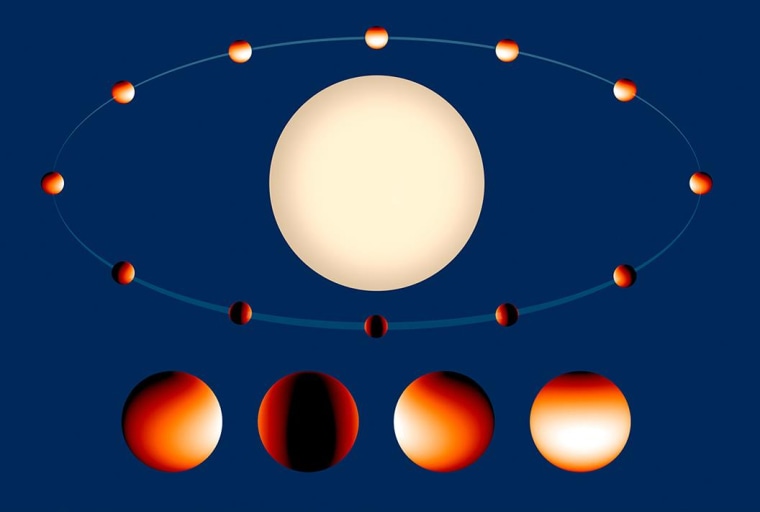A super-hot planet 260 light-years from Earth is showing signs of water vapor in its atmosphere, despite scorching temperatures that are hot enough to melt steel, according to the best weather map ever created of an alien world.
The Jupiter-size alien planet, called WASP-43b, is so hot that daytime temperatures reach 3,000 degrees Fahrenheit (1,648 degrees Celsius). At night, it's a bit cooler — about 1,000 F (537 C) — still hot enough to melt silver.
"WASP-43b is extreme in many ways," study co-author Jean-Michel Désert, of the University of Colorado Boulder, said in statement. "It's the size of Jupiter with twice its mass. Its orbit around its host star, called an orange dwarf, takes only about 19 hours, the blink of an eye compared to the 365 days it takes Earth to orbit the sun." [The Strangest Alien Planets (Gallery)]

Scientists used the Hubble Space Telescope to create the global temperature map for WASP-43B, and say it is the best one yet recorded. It shows variations by altitude and will be useful when one day the instruments exist to seek water vapor and other signs of habitability in smaller, Earth-sizeplanets, researchers said.
"The big picture is by making these precise measurements of thermal structure and abundance of chemical species [in the atmosphere], it becomes useful to do comparative studies amongst the planets outside our solar system," study co-author Jacob Bean at University of Chicago told Space.com.
The WASP-43b global temperature map research is detailed in the Oct. 10 edition of the journal Science. The study was led by astronomer Kevin Stevenson of the University of Chicago and included a dozen researchers from different universities and research institutions. The planet's water vapor content appeared in a separate paper in the Sept. 12 edition of the Astrophysical Journal Letters.
— Elizabeth Howell, Space.com
This is a condensed version of a report from Space.com. Read the full report. Follow Elizabeth Howell @howellspace. Follow us @Spacedotcom, Facebook and Google+.